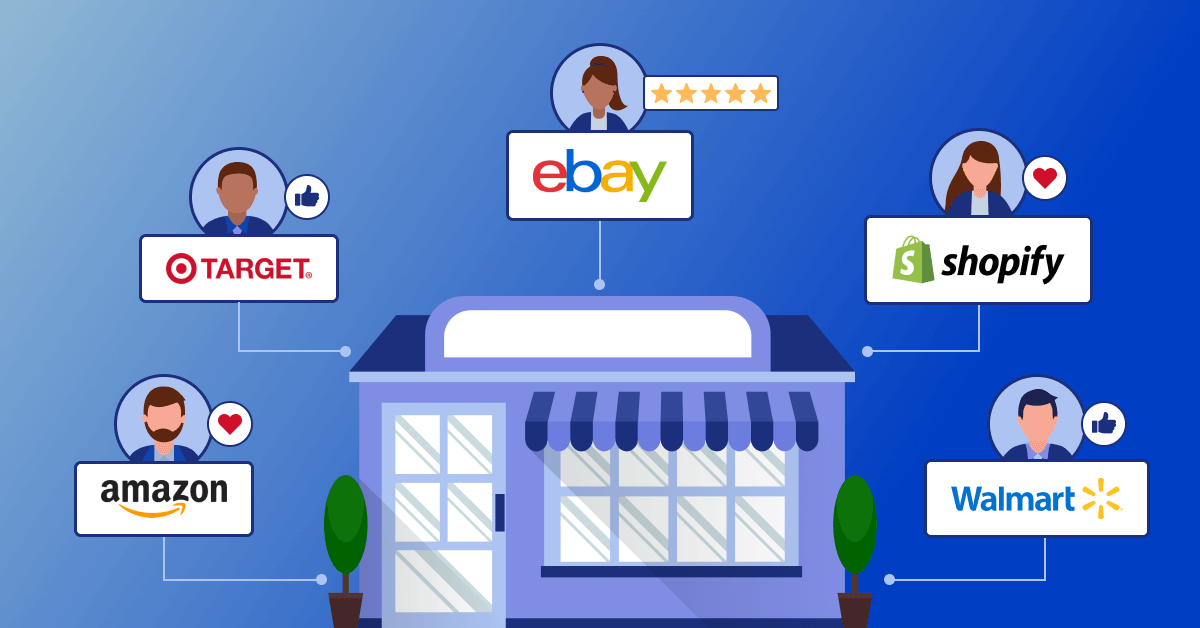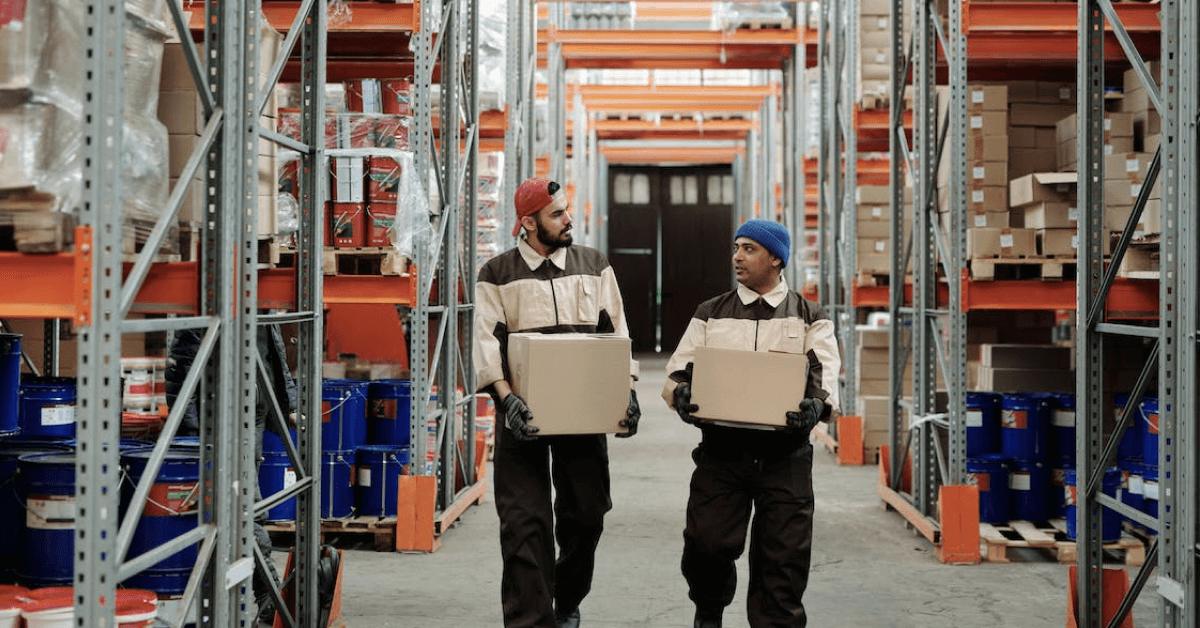Multichannel Customer Experience
 Fulfil
Fulfil
We'll explore three key areas of multichannel customer experience: product development, fulfillment, and returns.

Introduction
As a multichannel ecommerce merchant, it's important to consider how to effectively deliver a positive customer experience across all channels. This includes developing and pricing products in a way that is consistent and compelling, as well as fulfilling orders and managing returns in a way that is efficient and convenient for customers. In this blog post, we'll explore three key areas of multichannel customer experience: product development, fulfillment, and returns. By understanding the unique challenges and opportunities of each area, you can deliver a customer experience that builds loyalty and drives sales.
Multichannel Product Development
As a multichannel ecommerce merchant, carefully consider how you develop and price your products in order to provide a consistent and compelling customer experience across all channels. Here are a few points to consider:
Consistent pricing: Maintaining consistent pricing across channels is critical for building trust with customers and avoiding confusion. If customers see different prices for the same product on different channels, they may lose trust in your business.
Discounting and bundling: Discounts and bundling can be effective marketing tools, but it's important to apply them consistently across channels. For example, if you offer a bundle discount on your website, you should also offer it in your physical stores.
Localization: Localizing your products and marketing efforts can be an effective way to appeal to customers in different regions or countries. This might involve adapting your products or marketing materials to suit local preferences, or offering products in different languages or currencies.
Other considerations: There are many other factors to consider when developing products for a multichannel environment. For example, you may need to consider the different fulfillment options available for each channel, or the logistical challenges of shipping products to different locations. You may also need to consider how your products will be displayed or presented in different channels, such as on a website versus in a physical store.

Multichannel Fulfillment
Effective fulfillment is critical for delivering a positive customer experience and maintaining customer loyalty. As a multichannel ecommerce merchant, you may need to consider a variety of fulfillment options in order to meet the needs of your customers, across the different channels where your products are sold. Here are a few options to consider:
In-store pickup: Many customers appreciate the convenience of being able to purchase a product online and then pick it up in store. This can be a particularly appealing option for customers who want to avoid shipping fees or who need the product right away.
Ship from store: Some retailers allow customers to purchase products online and have them shipped directly from a nearby store. This can be an efficient way to fulfill orders, particularly if the store has the product in stock.
Dropshipping: Dropshipping allows you to sell products without having to physically stock them yourself. Instead, you partner with a supplier who handles the fulfillment of the product when it is ordered. This can be a cost-effective way to offer a wide range of products, but it may also result in longer shipping times and a less personalized customer experience.
Backordering: Occasionally, it makes sense to offer backordering as a fulfillment option for customers who are looking to order a product even though it is not currently in stock. This is similar to a pre-order workflow, which means that you will ship the product when you have the inventory to do so. If you are considering this fulfillment option, it’s important to consider the tax implications of having these outstanding liabilities on your balance sheet. Additionally, it’s critical to ensure that the customer is aware of the back order status, so that they aren’t surprised by the fulfillment timeline.
Third-party fulfillment: Using a third-party fulfillment provider can be a good option if you don't have the resources or infrastructure to handle fulfillment yourself. These companies handle everything from warehousing and inventory management to shipping and returns. This includes Amazon’s FBA offering, which can be an extremely effective way to offer your customers an exceptional post purchase fulfillment experience.
Overall, it's important to consider the needs and expectations of your customers, and educate them on what to expect during the fulfillment process regardless of the originating channel. This can happen at checkout, post-purchase via a confirmation email, SMS updates, or elsewhere, and will lead to the best possible experience. Otherwise, if a customer makes a purchase via a 3PL like Amazon FBA and gets the order within 1 day Prime shipping, this may set an unrealistic expectation for future purchases that might come from your D2C store.
Finally, having a centralized Order Management System (OMS), ideally within an Enterprise Resource Management (ERP) platform like Fulfil, can ensure that customers are correctly tracked across platforms and that the customer experience is seamless between channels.

Multichannel Returns
Managing returns, refunds, and exchanges is an important part of the customer experience, particularly for ecommerce merchants. As a multichannel merchant, you may need to consider how to effectively handle these requests across different channels. Here are a few points to consider:
Accepting returns: It's important to clearly communicate your return policy to customers and make it easy for them to initiate a return or exchange, regardless of which channel they placed an order on. This might involve providing a return shipping label or allowing customers to return items in store.
Managing returns: Effectively managing returns can be challenging, particularly for multichannel merchants. It's important to track returned items and update your inventory accordingly, as well as process refunds or exchanges in a timely manner.
Customer Support Tool: Having a customer support ticketing tool can be helpful for managing returns and other customer inquiries. This allows customers to easily submit requests and track the status of their request. It can also help you keep track of customer issues and resolve them more efficiently, especially if a customer has placed orders on multiple different channels in the past.
Overall, it's important to have a clear and customer-friendly returns policy, as well as effective systems in place for managing returns, refunds, and exchanges. This can help improve customer satisfaction and build customer loyalty.
Looking Ahead
While channel expansion as an ecommerce merchant can lead to increased revenue and growth, it can also very easily result in a degraded customer experience if not carefully managed. However, by developing and pricing products in a way that is consistent and compelling, as well as fulfilling orders and managing returns efficiently and conveniently for customers, you can account for this risk during expansion. Overall, by understanding the unique challenges and opportunities in each area, you can craft strategies that actually build customer loyalty and drive sales. To learn more about how Fulfil enables ecommerce merchants to scale customer experience across dozens of different possible channels, book a demo with our team.
Tags:

Fulfil
Fulfil is the AI-native ERP built for modern Shopify and DTC brands. No consultants. No middleware. No surprises. Connect your sales channels, warehouses, accounting, and fulfillment in one system. Set up in weeks, not months.